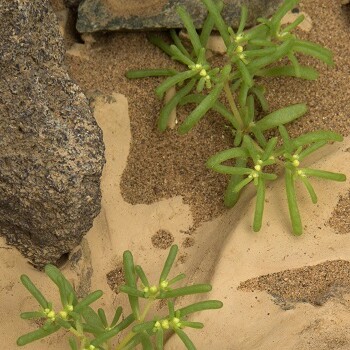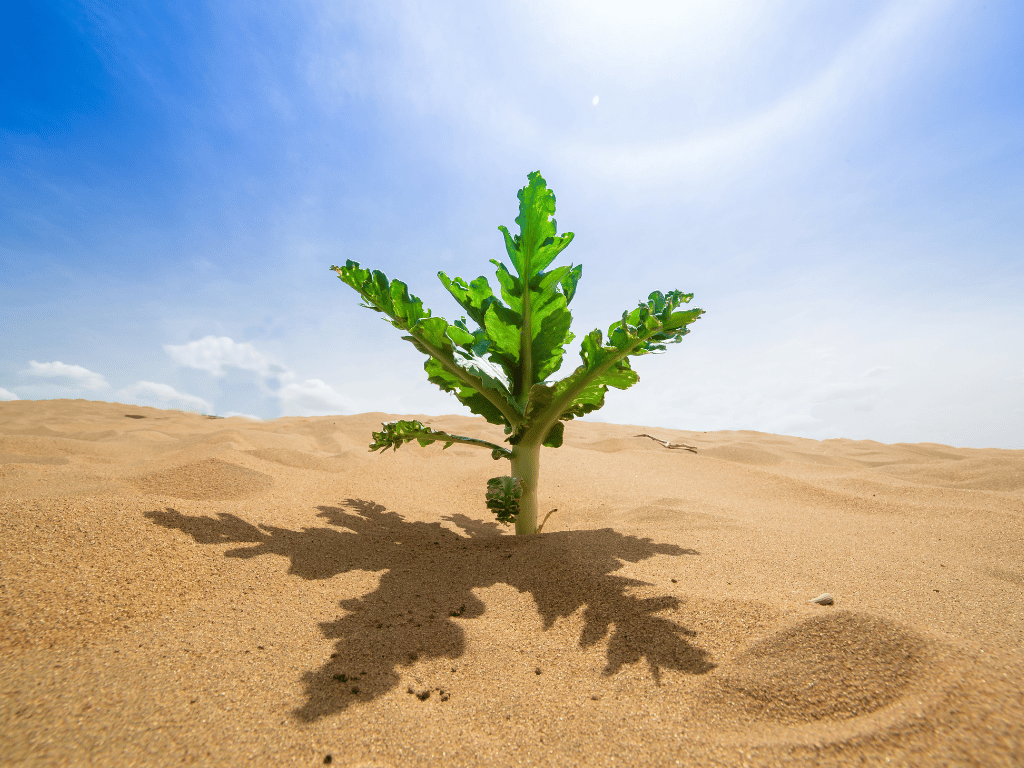
An integrative omics approach to unlock the potential of underutilized and wild plant species for sustainable desert agriculture
Simon G. Krattinger, Salim Al-Babili, Ikram Blilou, Heribert Hirt, Magdy Mahfouz, Mark A. Tester & Rod A. Wing
In 30 years, humanity will face the unprecedented challenge of having to sustainably produce healthy food for 10 billion people. To address this challenge, new staple crops with fast maturation times and high tolerance to heat, drought and salt are needed. Domestication and modern breeding have greatly increased the performance of modern-day crops, but at the same time have reduced the biodiversity used for food production (Tanksley & McCouch, 1997). While more than 30,000 plant species are considered edible, only around 150 are actively cultivated. Three crop species, wheat (Triticum aestivum), rice (Oryza sativa) and maize (Zea mays), dominate modern agriculture and account for more than 50% of the globally produced calories (Nelson et al., 2010). Although domestication, early landrace selection and modern breeding have adapted these species to a huge range of climates and cultivation practices, there is limited diversity within these few plant species for cultivation in the most extreme environments. Because of their primary domestication origins, many of today’s most widely cultivated crops are not well suited to these conditions.
During the past two decades, genomics and other omics disciplines have emerged as powerful new tools in agriculture and plant breeding. AgriGenomics covers the use of state-of-the-art genomic tools for crop improvement. For example, genetic and genomic studies revealed that the transition from wild to domesticated plants occurred through spontaneous mutations that affected only a few key domestication genes (Olsen & Wendel, 2013). Genomic selection is nowadays used as a powerful approach to predict and improve the performance of crop plants based on genomic information (Wallace et al., 2018), and genome editing can be used to introduce precise DNA changes in order to modify traits – including those associated with domestication (Hickey et al., 2019). In addition, progress in precision phenotyping, metabolomics and machine learning has resulted in a much improved understanding of crop growth and development. The confluence of these powerful tools and technologies are driving a paradigm shift in the understanding of plant growth and development and are having a profound impact on improvement of crop species.
While it took thousands of years to transform the wild ancestors of today’s crops into their modern forms, this process can now be achieved within one to two decades through the power of genomics, phenomics and metabolomics. To address the challenge of sustainably cultivating staple crops in open desert fields, we propose a radical and innovative approach – to identify wild and semi-domesticated plant species with a high degree of adaptation to extreme environments (e.g. hot, arid and saline) and domesticate these plants for the production of food in KSA and surrounding regions.
The aim of this project is to establish genomic, metabolomic, and phenomic resources that will allow us to advance the improvement of two crop wild relatives and one orphan crop with a high potential for desert and/or seawater agriculture, i.e. Asian wild rice (Oryza coarctata), Salicornia bigelovii, and fonio millet (Digitaria exilis). All three species have the potential to revolutionize agriculture under extreme environments. Fonio holds great potential for desert agriculture because it exhibits high tolerance to heat, drought, and marginal soils; O. coarctata can grow under high saline and high temperature environments, and S. bigelovii can grow in full sea water. Our aim is to extensively characterize these three carefully chosen species by using an array of integrative omics approaches, which will lead to a deep understanding of the genetics, genomics, physiology, and the associated microorganisms of these species. We believe that the comprehensive knowledge gained during this project will allow us to make informed decisions on how to most effectively and rapidly utilize Asian wild rice, fonio, and Salicornia for desert and/or seawater agriculture.

The vast majority of the calories produced for food and feed are derived from grain-producing crops. Unsurprisingly, grain production dominates modern agriculture and constitutes around 80% of our food and energy requirements. This is best exemplified by the importance that wheat, rice, and maize play in modern agriculture. Every agricultural program striving towards self-sufficiency must thus address sustainable grain production. Grain prices are usually much lower than prices for other agricultural commodities and covered agriculture for grain production is not an economically viable option. Here, we present an innovative approach that will address the problem of field-grown grain production in hot and arid environments by using cutting-edge translational research. This work will form the basis to establish sustainable grain production in arid regions. As an immediate outcome, the most suitable fonio accessions identified from the diversity screens might directly be grown for food and feed production in arid regions. The long-term goal of this work consists in the adaptation and continuous improvement of the three species to a sustainable but highly productive agriculture.
Website: https://www.heribert-hirt.org/
Email: heribert.hirt@kaust.edu.sa
Related Posts
International & Multidisciplinary Workshop – THIRD EDITION
Dear colleagues, post-docs and students. For all…



